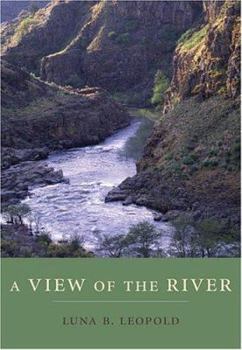A View of the River
Select Format
Select Condition 
Book Overview
With the Midwest under water, America had a chance to see how effectively it had "improved" its rivers. We've straightened and dredged them, revetted and rerouted them, made massive efforts to control them, yet our actions have been less than successful. Too often, physical changes made to a river conflict with natural processes, resulting in--rather than alleviating--damage. Applying available knowledge on how rivers form and act could prevent such problems. In this book, Luna Leopold seeks to organize such knowledge. Widely regarded as the most creative scholar in the field of river morphology, Leopold presents a coherent description of the river, its shape, size, organization, and action, along with a consistent theory that explains much of the observed character of channels. The laws of physics that govern rivers allow for variations, many of them dictated by random chance. Thus, a river's adaptation, as Leopold describes it, tends toward the most probable form, the one with the least variance among hydraulic parameters. We see how this probabilistic tendency plays out as Leopold views the river as a whole from headwater to mouth, in the drainage net, in the behavior of meanders, and in aspects of sediment transport. Grounded in hydraulics, geomorphology, and surveying, as well as in extensive fieldwork on rivers in the eastern and Rocky Mountain states, Leopold's view of a river is at once technical and personal, providing both a firm foundation for understanding the behavior of rivers--including instructions for getting started in backyard hydrology--and a wealth of firsthand observations by a thoughtful and experienced scientist. It will be of immediate interest and great use as we seek to develop, preserve, and appreciate our most fluid natural resource.
Format:Hardcover
Language:English
ISBN:0674937325
ISBN13:9780674937321
Release Date:June 1994
Publisher:Harvard University Press
Length:320 Pages
Weight:1.28 lbs.
Dimensions:0.9" x 6.6" x 9.5"
Customer Reviews
4 ratings
A View of the river
Published by Thriftbooks.com User , 18 years ago
An outstanding resourse for professionals in the hydrology industry. Highly recommended
Luna Leopold: the godfather of hydrology.
Published by Thriftbooks.com User , 24 years ago
This book is a must-have for your library if you will only have ONE book on freshwater hydrology. Leopold thoroughly explains the essential processes in a way that is clear and understandable. Also show ways to put this knowledge to work near your home. Reading this book is critical to your competent understanding of basic hydrologic processes, so you can be an intelligent consumer of the stuff put out by the mass media. Get it. Read it. Re-read it.
A scholarly, college level text.
Published by Thriftbooks.com User , 26 years ago
Excellent, and up to date,overview of rivers and the hows' and whys' of their existence. Great book for a college course or to keep around for professional reference. Loaded with diagrams, well organized, and very comprehensive. Covers; river channels, measurement, flow, distribution of discharge, floods, hydraulic geometry, drainage networks, river morphology, sediment load, etc, etc. Includes just enough equations that are light to moderate in complexity, about college sophomore level. Moderately easy to read, but not for casual reading. Overall a super book for those who are interested in the "nuts and bolts" of how and why a river works.
A magnificent book for anyone interested in fluvial systems
Published by Thriftbooks.com User , 27 years ago
This is one of the best books about river systems that I have yet read. The author covers the basics of fluvial hydrology and geomorphology as he explains what he has learned about rivers over his many years of study. Written for the general public the author speaks to you as a mentor, not a professor lecturing his students. Chapters cover the following topics: The river channel; River measurement; Meanders and bars; Distribution of discharge in space and time; Rivers of the world; Flow variability and floods; Relationships between channel and discharge; Hydraulic geometry; Sediment load; The drainage network; Energy utilization; River morphology - the most probable state. Each chapter could be the topic of a college-level symposium or course. The references include many classic USGS Professional Papers. As a geologist I have gained a deeper appreciation for fluvial systems and their deposits because of the material contained in this book. Any fluvial stratigrapher, sedimentologist, hydrologist or geomorphologist should have a copy of this book. I recommend it for anyone whose livelihood depends upon rivers as well as those who just want to learn why rivers behave as they do. C. J. Donofrio





